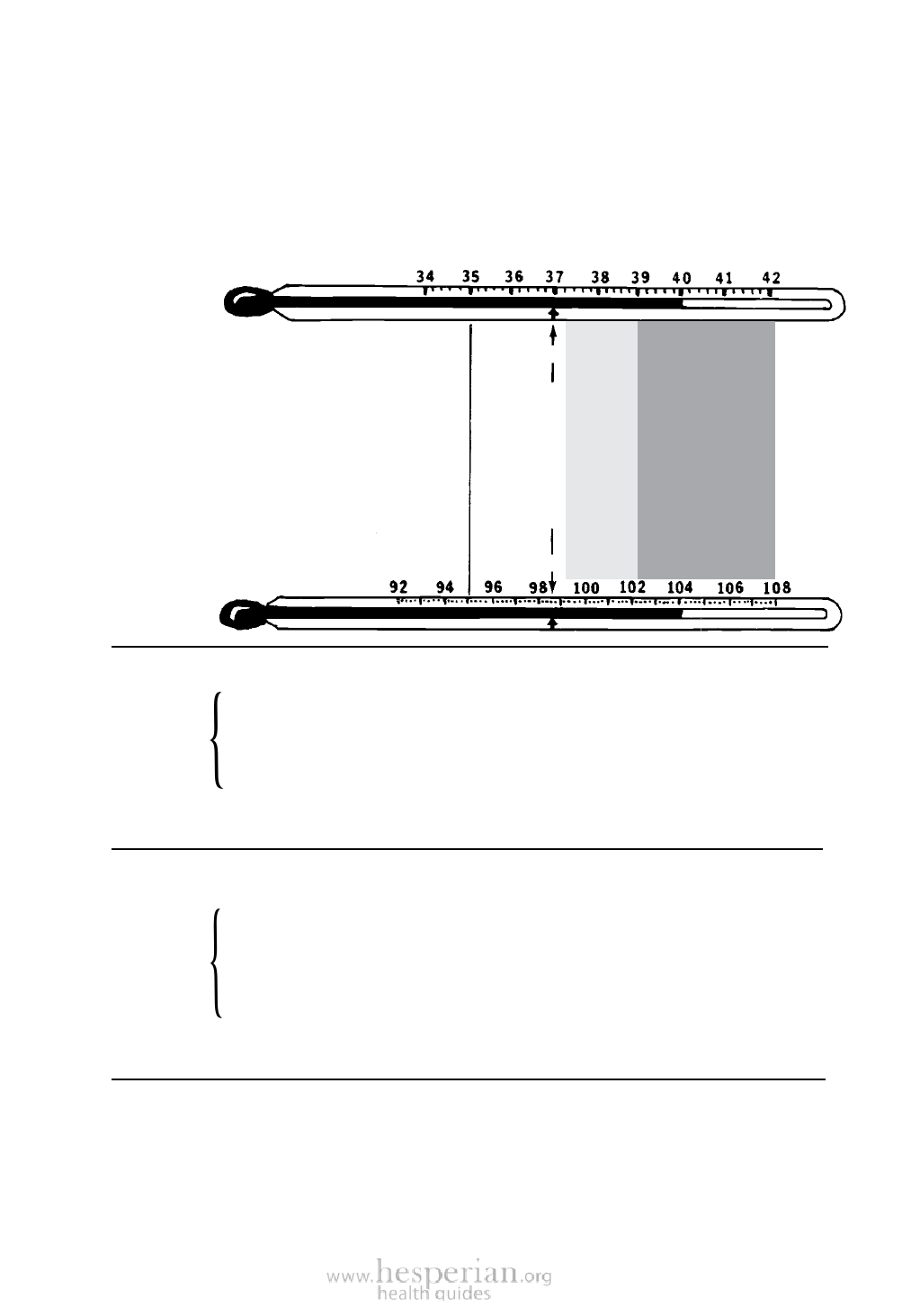
INFORMATION ON VITAL SIGNS
TEMPERATURE
There are two kinds of thermometer scales: Centigrade (C.) and Fahrenheit (F.).
Either can be used to measure a person’s temperature.
Here is how they compare:
CENTIGRADE
This thermometer reads 40˚C.
(Forty degrees Centigrade)
FAHRENHEIT
This thermometer reads 104˚ F.
(104 degrees Fahrenheit)
below
35º C
TOO
LOW
below
95º F
37º C
above
39º C
N
O SOME
R FEVER
M
A
HIGH
FEVER
L
98.6º F
above
102º F
{PULSE OR HEARTBEAT
For a
person
at rest
ADULTS. . . . . . . 60 to 80 beats per minute is normal.
CHILDREN. . . . . 80 to 100 beats per minute is normal.
BABIES. . . . . . . 100 to 140 beats per minute is normal.
NEWBORNS. . . . 120 to 160 beats per minute is normal.
For each degree Centigrade (C.) of fever, the heartbeat usually increases
about 20 beats per minute.
{RESPIRATION
For a
person
ADULTS AND
OLDER CHILDREN. .12 to 20 breaths per minute is normal.
CHILDREN. . . . . . . up to 30 breaths per minute is normal.
at rest BABIES. . . . . . . . . . up to 40 breaths per minute is normal.
NEWBORNS . . . . . . .30 to 60 breaths per minute is normal.
M ore than 40 shallow breaths a minute usually means pneumonia (see p. 171) for a
child or an adult. For babies, 50-60 breaths per minute probably means pneumonia.
BLOOD PRESSURE (This is included for health workers who have the
equipment to measure blood pressure.)
F or a person at rest, 120/80 is normal, but this varies a lot.
If the first reading (when the sound begins), is over 160, or if the second reading
(when the sound disappears), is over 100, this is a danger sign of high blood
pressure (see p. 125).